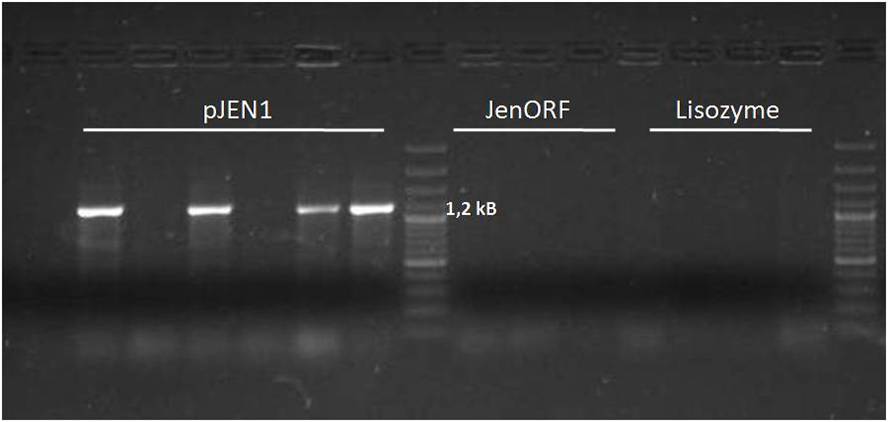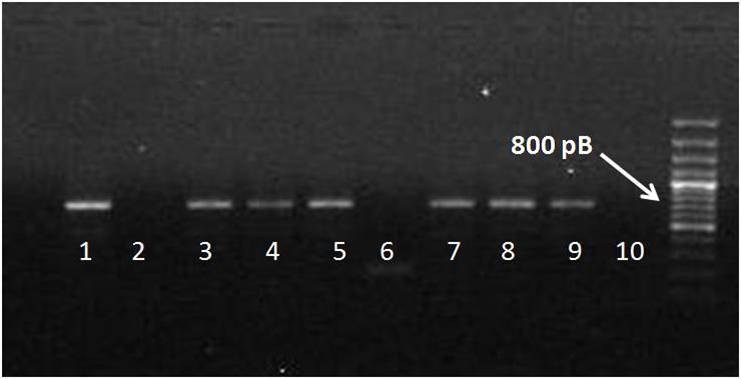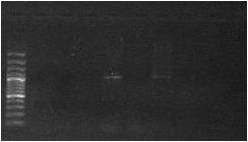Team:UNICAMP-Brazil/Notebooks/October 7
From 2009.igem.org
(→New Strategy: pGEM) |
|||
| (4 intermediate revisions not shown) | |||
| Line 25: | Line 25: | ||
''Fabi and Léo'' | ''Fabi and Léo'' | ||
| + | |||
| + | ====CeiB: Problems with agarose gel==== | ||
| + | |||
| + | *<p style=”text-align:justify;”>Today, we tried to join our CeiB part into the plasmid Biofusion. We made the enzyme restriction, nevertheless we had serious problems with the agarose gel and we lose the samples. | ||
| + | |||
| + | ''Ane e Luige'' | ||
| + | |||
==''' YeastGuard'''== | ==''' YeastGuard'''== | ||
| - | ====New | + | ====[https://2009.igem.org/Team:UNICAMP-Brazil/Protocols/pGEMStrategy New Strategy: pGEM]==== |
| + | |||
*<p style=”text-align:justify;”>We confirmed the insertion of pJEN1 in pGEM by colony PCR using the part's internal forward primer and the vector's reverse primer (M13). Unfortunately there were no transformed colonies with JENorf, neither lysozyme.</p> | *<p style=”text-align:justify;”>We confirmed the insertion of pJEN1 in pGEM by colony PCR using the part's internal forward primer and the vector's reverse primer (M13). Unfortunately there were no transformed colonies with JENorf, neither lysozyme.</p> | ||
[[Image:pJEN1JenORFLiso.jpg|600px|center]] | [[Image:pJEN1JenORFLiso.jpg|600px|center]] | ||
| Line 36: | Line 44: | ||
[[Image:gelORFJen.jpg|400px|center]] | [[Image:gelORFJen.jpg|400px|center]] | ||
| - | ====YFP+Terminator==== | + | ====Another try for YFP+Terminator==== |
*<p style=”text-align:justify;”>We did colony PCR to amplify the fragment between the vector's annealing sites (vector's primers forward and reverse) that we expected to be the YFP linked to the terminator sequence. We found some strange fragments in YFP-End PCR. This fragaments correspond to the vectors size (YFP Biobrick) without the insert (End). We believe that this fragment correspond to the recircularized vector. Our expected fragment wouldn't be amplified, since it has 3000pb, so we decided to perform miniprep from the colonies that showed no amplicons! We hope we are right! =)</p> | *<p style=”text-align:justify;”>We did colony PCR to amplify the fragment between the vector's annealing sites (vector's primers forward and reverse) that we expected to be the YFP linked to the terminator sequence. We found some strange fragments in YFP-End PCR. This fragaments correspond to the vectors size (YFP Biobrick) without the insert (End). We believe that this fragment correspond to the recircularized vector. Our expected fragment wouldn't be amplified, since it has 3000pb, so we decided to perform miniprep from the colonies that showed no amplicons! We hope we are right! =)</p> | ||
[[Image:YFPPCR.jpg|350px|center]] | [[Image:YFPPCR.jpg|350px|center]] | ||
| Line 42: | Line 50: | ||
''Raíssa'' | ''Raíssa'' | ||
| - | ==== | + | ====YEP358: yeast expression plasmid==== |
We decided to use this vector to test our constructions in expression experiments with ''S. cerevisiae''. This plasmid has a polylinker site that permits to insert our constructions. Fortunately it has ''Xba''I and ''Pst''I sites that make the clonning easier for us. In adition, the vector contains an Ura3 gene, used to select transformed colonies since the medium used have no Uracila. Because of our problem with the terminator biobrick we decided to cut of part of the plasmid's β-galactosidase gene and use it´s terminator. | We decided to use this vector to test our constructions in expression experiments with ''S. cerevisiae''. This plasmid has a polylinker site that permits to insert our constructions. Fortunately it has ''Xba''I and ''Pst''I sites that make the clonning easier for us. In adition, the vector contains an Ura3 gene, used to select transformed colonies since the medium used have no Uracila. Because of our problem with the terminator biobrick we decided to cut of part of the plasmid's β-galactosidase gene and use it´s terminator. | ||
{{:Team:UNICAMP-Brazil/inc_rodape}} | {{:Team:UNICAMP-Brazil/inc_rodape}} | ||
Latest revision as of 03:53, 22 October 2009
| ||||||||||||||||||||||||||||||||||
 "
"


















